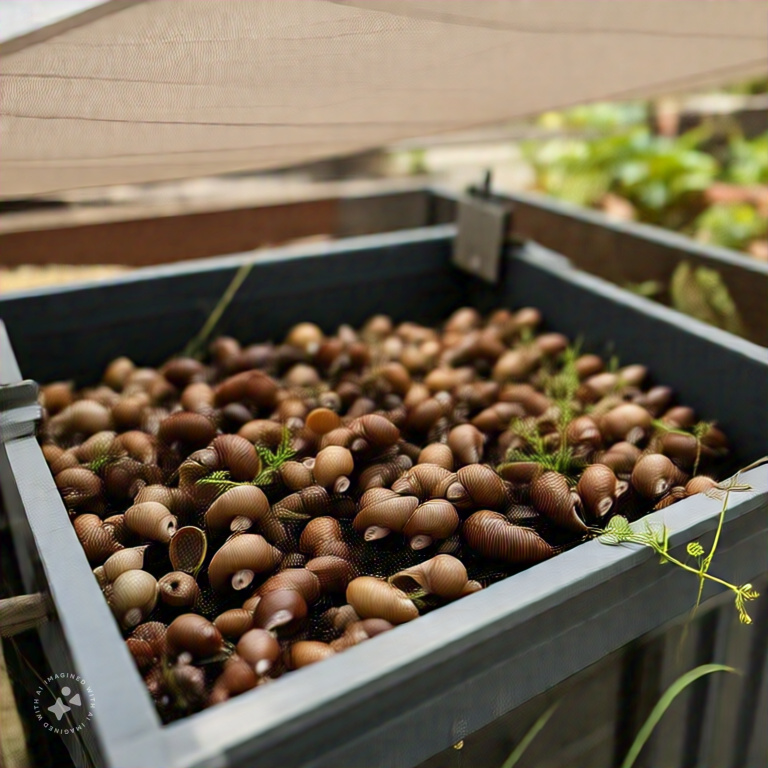Why Consider Snail Farming?
Snail farming offers a unique opportunity to tap into a growing market while promoting sustainability. Key benefits include:
- Low Startup Costs: Minimal initial investment in equipment and infrastructure.
- Sustainable Practice: Snails have a low ecological footprint compared to other livestock.
- High Market Demand: Snail meat is a delicacy in many cuisines and an ingredient in the cosmetic industry.
- Scalability: Easy to start small and expand as you grow.
1. Understanding the Snail Farming Industry
Before starting, it’s important to understand the basics:
- Target Markets:
- Local restaurants and markets.
- Export opportunities to regions with high snail consumption, like Europe and Asia.
- Cosmetic companies for snail slime.
- Types of Snail Products:
- Fresh or processed snail meat.
- Snail slime for skincare.
- Shells for decorative and industrial purposes.
2. Choosing the Right Snail Species
Selecting the right snail species is crucial for your business. The three most commonly farmed species are:
- Achatina achatina (Giant African Land Snail):
- Large size and high reproduction rate.
- Requires warm and humid environments.
- Achatina fulica:
- Hardy species adaptable to various climates.
- Slightly smaller than Achatina achatina.
- Archachatina marginata:
- Highly prized for its meat quality.
- Slower growth rate but better market value.
3. Setting Up Your Snail Farm
Starting a snail farm doesn’t require a large plot of land. Here’s how to set up your farm efficiently:
a. Location
- Choose a location with partial shade and good drainage.
- Avoid areas prone to flooding or high winds.
b. Housing Systems
Snail housing should protect them from predators, harsh weather, and pests while allowing them to thrive. Popular systems include:
- Hutch Boxes: Ideal for small-scale farming.
- Trench Pens: Dug into the ground and covered with netting.
- Free-Range Systems: Large, enclosed areas mimicking natural habitats.
c. Soil Preparation
- Use loamy soil rich in organic matter and calcium.
- Maintain soil moisture to prevent dehydration.
4. Breeding and Stocking Snails
a. Procuring Snails:
- Collect snails from the wild or buy from reputable breeders.
- Start with mature snails for faster reproduction.
b. Breeding Basics:
- Snails are hermaphrodites; each can lay eggs.
- Optimal conditions include 20°C–30°C temperature and 75%–95% humidity.
- Ensure proper feeding to encourage egg-laying.
5. Feeding and Maintenance
Proper feeding and care are key to healthy and productive snails.
a. Feeding
- Snails are herbivores; feed them vegetables (lettuce, cabbage) and fruits (pawpaw, watermelon).
- Provide calcium sources like crushed eggshells for shell development.
b. Maintenance
- Regularly clean snail housing to prevent diseases.
- Keep the environment moist and shaded.
- Protect against predators like ants and rodents.
6. Harvesting and Marketing Snails
Snails reach maturity between 6–12 months.
a. Harvesting:
- Harvest snails gently to avoid shell damage.
- Collect during the rainy season when they are most active.
b. Marketing Your Snails:
- Local Markets: Sell to local restaurants, markets, or individuals.
- Processing for Export: Freeze, dry, or package snails for international markets.
- Cosmetic Industry: Partner with companies using snail slime in skincare products.
7. Scaling Your Snail Farming Business
Once your farm is established, explore these growth strategies:
- Expand Operations: Increase the size of your farm or add more housing units.
- Diversify Products: Process snail meat, sell slime, or create value-added products.
- Leverage Technology: Use apps to track feeding schedules, breeding cycles, and environmental conditions.
8. Challenges and Solutions in Snail Farming
While snail farming is lucrative, it comes with challenges:
- Pests and Predators: Use secure enclosures and natural repellents.
- Climatic Changes: Adapt housing to regulate temperature and humidity.
- Market Fluctuations: Build a diverse customer base to mitigate risks.
9. Starting with Minimal Investment
If you’re on a tight budget, follow these tips:
- Start with a small number of snails and scale gradually.
- Use recycled materials for housing construction.
- Leverage free resources like online tutorials and community workshops.
10. The Future of Snail Farming
As demand for sustainable and organic food grows, snail farming presents a golden opportunity for aspiring entrepreneurs. By starting small, focusing on quality, and exploring diverse markets, you can establish a thriving business.
Conclusion
Small-scale snail farming is a rewarding venture that combines low costs with high returns. Whether you’re an aspiring farmer or a seasoned entrepreneur, following this guide will help you navigate the journey of starting and growing your snail farming business.
Are you ready to dive into snail farming? Start today, and watch your business flourish! Share this guide with others looking to venture into sustainable farming.

